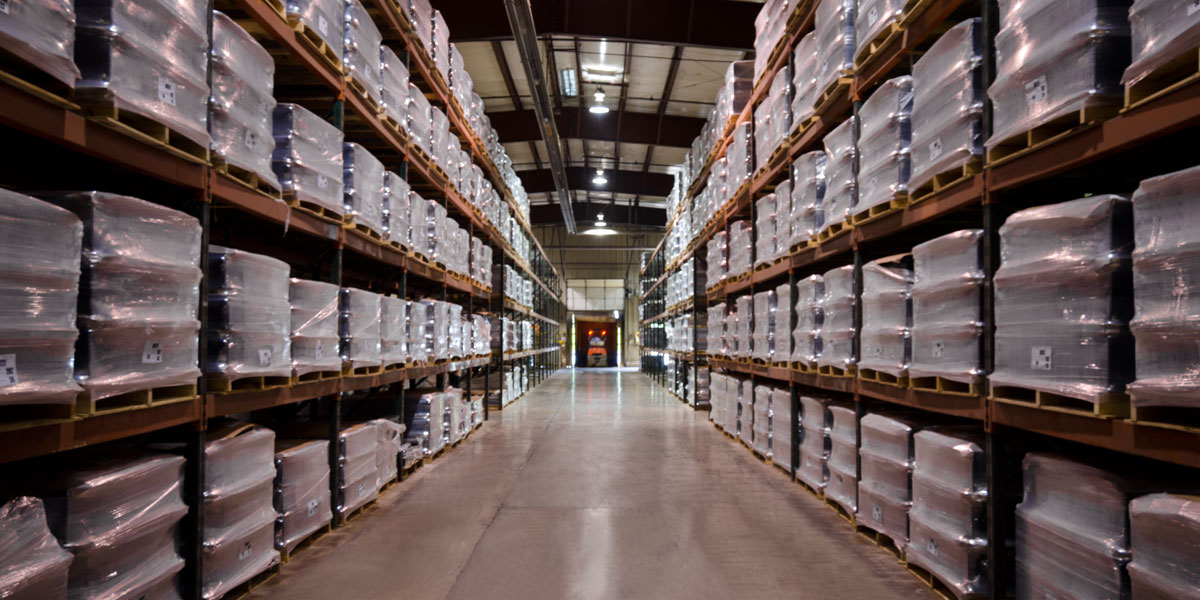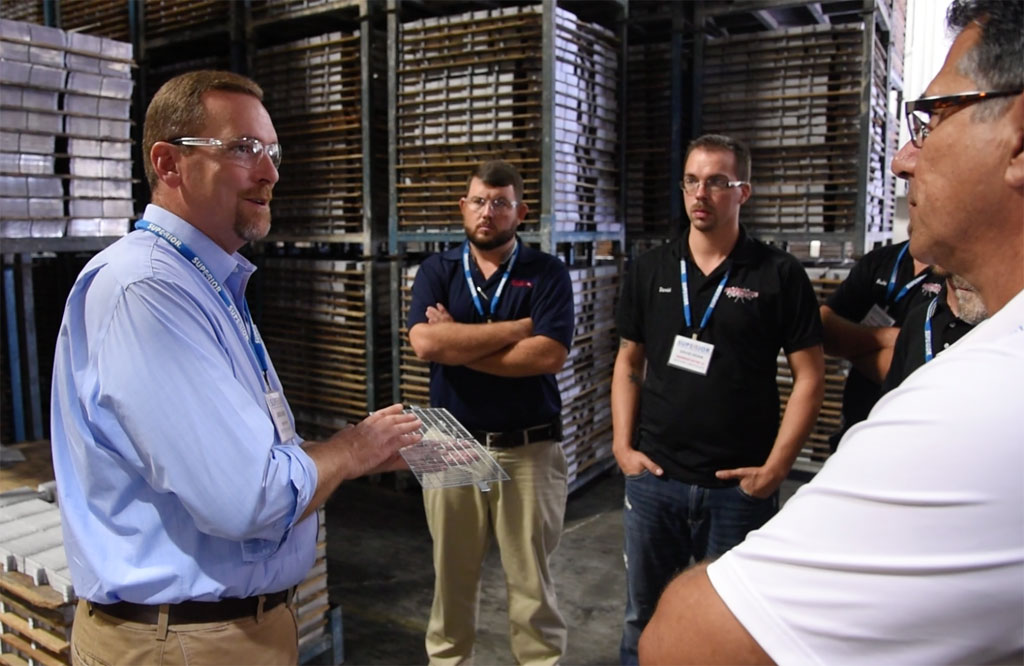

There are many considerations for storing and maintaining Superior and Superlex battery inventory once the batteries arrive at the warehouse. See the below recommendations, and visit Battery Council International for more resources and tips.
A responsible service person should be given the responsibility of the desginated battery storage area and inventory maintenance. Duties, and the appropriate safety procedures, should be clearly explained. The proper tools and equipment should be provided and an understanding of their use should be required.
Equipment should include a slow charger, a fast charger, battery connectors, hydrometers, and thermometers. A carrying strap, terminal cleaner, water filler and a supply of baking soda for the neutralization of acid, should also be available.
The battery room, or area, should be equipped with an adequate exhaust fan. Safety equipment such as eye protection, rubber gloves, safety shoes, acid proof clothing, etc., should be provided. An eye-wash sink should also be available in case of emergencies.
All batteries should be stored in a cool, dry place in an upright position.
Superlex Premium Power Batteries® product stock must be rotated on a strict, first-in, first-out basis. Date codes are stamped on batteries and on the shipping pallet to accomplish this important rotation rule. The main cause for selling a dated, discharged replacement battery, is failure to follow the “first-in, first-out” rotation rule.
Roller racks provide the best method for storing and insuring the proper rotation of batteries. Racks should be marked on the front and rear so the same type of battery will go in the same rack every time. If racks are loaded properly, the oldest battery of a particular type will always appear in the front.
If roller racks are not available, other shelving can be used. Stock rotation is difficult using a standard type of storage, unless the shelving can be simultaneously accessed from the front and the rear. If the shelving cannot be accessed from the front and rear, rotation will have to be done by hand. Store batteries of the same type, with approximately the same date codes on the same shelf. Never mix types. Check new batteries before placing them in stock to make certain they are fully charged. Batteries should never be piled one on top of the other.
If a battery becomes severely discharged, the electrolyte can freeze if it is stored below +20°F (-7°C). To prevent damage due to freezing, do not allow batteries to become discharged or to be stored below +20°F (-7°C). The electrolyte does not freeze solid until a lower temperature is reached. Solid freezing of electrolyte in a discharged battery will damage the plates and may crack the container. Batteries in which the electrolyte has frozen must be scrapped.
A battery that is at a 75% state of charge, or greater, is in no danger of freezing. Therefore, batteries should be kept at least 75% charged, especially during the winter. The state-of charge of stored batteries should be checked every 30 days.
All automotive wet batteries will slowly lose charge when not in service. This is known as self-discharge.
Standard maintenance free batteries containing certain grid alloys, self-discharge at a lower rate than deep cycling batteries. The rate of self-discharge increases with increasing temperature; this is true for both maintenance free and deep cycle batteries.
Allowing batteries to stand for an extended period of time without recharging them, will result in reduced performance and service life. To preserve optimum battery performance and life, recharge batteries in storage when the open circuit voltage drops to 12.4 volts.
To make up for self-discharge while in stock, a boosting charge should be given to batteries whenever they fall .040 points in specific gravity, corrected to 80°F (26.7°C). The boosting charge should be administered regardless if the batteries are to remain in stock or are being prepared for sale. This boost charge will normally be required after about 15-40 weeks of storage at 30°F (-1.12°C). The specific gravity drop will occur faster at elevated temperatures and slower at reduced temperatures. Observe the level of electrolyte before putting a battery on charge, and if necessary, add water to the cells to bring them to proper level.
A charge rate of 3% of the Reserve Capacity rate should be used to charge the battery. The charging should continue until the specific gravity of the electrolyte, corrected to 80°F (26.7°C), is constant over three successive readings taken at one hour intervals.
Some batteries may be sealed in a way that does not allow the specific gravity to be checked. The charging rate for these batteries is also 3% of the Reserve Capacity rate. The length of charge should be one half of the Slow Charge time on the Battery Charging Guide. For example, a battery rated at 100 minutes of Reserve Capacity and reading 12.4 volts should be charged at 3 amps for 10 hours.
Storing batteries for long periods of time without recharging them may accelerate grid corrosion and form boundary layers of non-conductive material between the grid wires and the active materials. This can result in a loss in capacity and early battery failure.
Dry charged batteries contain no electrolyte until activated for service. These batteries should be stored in a cool, dry place. The ambient temperature should be as uniform as possible. Large temperature fluctuations will cause air to enter batteries as they cool (even though they are sealed) and expel air as they become warm. It is very important to rotate the stock on a “first-in, first-out” basis. The length of time these batteries can be stored depends upon the original processing of the plates and separators, the exposure to temperature variations, and the humidity conditions during storage. Under adverse conditions, batteries may lose their charge in a few months; under ideal conditions, the charge retention may last for a few years.
The main advantage of dry charged batteries is that they can be stored for long periods of time without permanent damage. They do not experience appreciable deterioration such as sulfation or corrosion while in storage. This is not true for a wet battery.

Participants in Superior Battery's annual Battery University seminar will receive the most intense and beneficial battery training you can find anywhere. Let us help you grow your business through knowledge, strategy and networking.